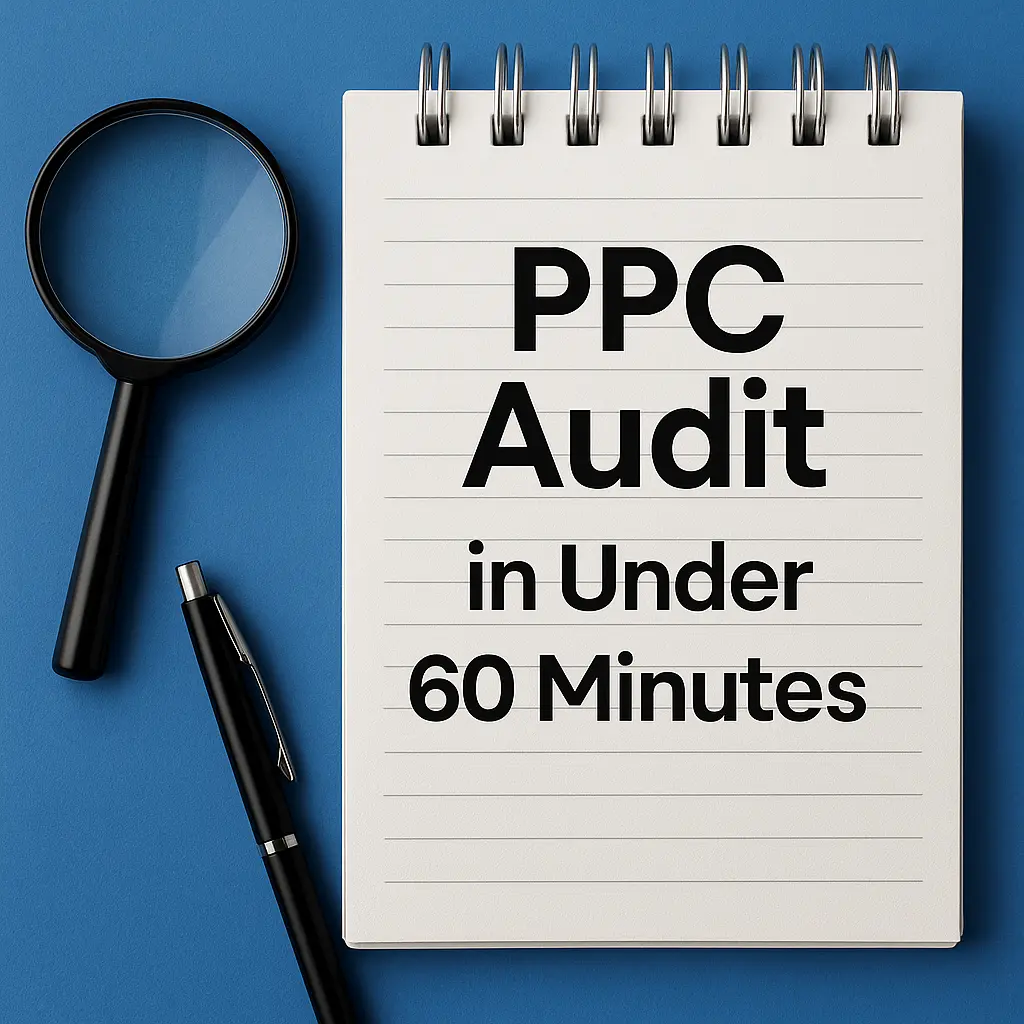Introduction to Public Relations in the Modern Era
In a world where information travels at the speed of a click, the question “What is PR?” has never been more relevant. Public Relations (PR) is often misunderstood as merely crafting press releases or schmoozing with journalists. However, in today’s digital-first landscape, PR is a dynamic, strategic discipline that shapes how brands are perceived, builds trust with audiences, and drives measurable growth. Whether you’re a startup founder, a seasoned marketer, or a communications lead, understanding PR can unlock new opportunities for your brand.
This guide will demystify public relations, exploring its core pillars and illustrating why it’s a vital tool for growth-driven brands. From media relations to crisis communication, we’ll dive into how PR integrates with digital marketing channels like SEO and social media to amplify impact. Let’s redefine what PR means in 2023 and beyond—and show why it’s more than just reputation insurance.

What Is PR? Defining Public Relations Today
At its core, Public Relations is the art and science of managing a brand’s image and relationships with its stakeholders—be it customers, investors, employees, or the media. Unlike advertising, where you pay for visibility, PR focuses on earned media, which means gaining coverage and credibility through authentic, unpaid channels.
The Public Relations Society of America (PRSA) defines PR as “a strategic communication process that builds mutually beneficial relationships between organizations and their publics.” In simpler terms, PR is about storytelling with purpose—crafting narratives that resonate and influence perception.
But in the modern context, PR has evolved far beyond traditional media outreach. It now encompasses digital platforms, social media engagement, and even internal communications. For growth-driven brands, understanding what is PR is the first step toward leveraging it as a competitive advantage.
For further reading on the formal definition of PR, check out the PRSA’s official resource on public relations.
PR vs. Marketing vs. Advertising: What’s the Difference?
While PR, marketing, and advertising often overlap, they serve distinct purposes:
- Public Relations: Focuses on reputation and relationships, often through earned media and storytelling.
- Marketing: Aims to promote products or services, driving sales through a mix of strategies, including PR.
- Advertising: Involves paid placements to ensure visibility and direct audience reach.
PR often complements marketing and advertising by providing credibility that paid channels can’t replicate. A well-placed news article or influencer mention, for instance, can carry more trust than a paid ad.
The Core Pillars of a Modern Public Relations Strategy
A robust public relations strategy isn’t a one-size-fits-all approach. It’s built on several key pillars that address different aspects of brand communication. Below, we’ll explore the five essential components of modern PR and how they contribute to growth and brand reputation.
1. Media Relations: Building Bridges with Journalists
Media relations remains a cornerstone of PR. It involves cultivating relationships with journalists, editors, and outlets to secure coverage for your brand. This isn’t just about sending out press releases—it’s about pitching stories that align with the outlet’s audience and editorial focus.
Effective media relations can position your brand as an industry leader, especially during product launches or funding rounds. For example, a tech startup announcing a new app might secure a feature in TechCrunch, gaining exposure to a highly relevant audience.
2. Thought Leadership: Establishing Authority
Thought leadership is about positioning key figures within your organization as experts in their field. This could mean publishing op-eds, speaking at industry events, or contributing to niche publications. For startups, thought leadership within a PR for startups framework helps build credibility in crowded markets.
For instance, a founder writing about sustainability trends in a major business journal can elevate their brand’s reputation as an innovator. This kind of PR doesn’t just promote a product—it builds long-term trust.
3. Crisis Communication: Protecting Brand Reputation
No brand is immune to crises, whether it’s a product recall, a negative viral story, or an internal scandal. Crisis communication is the PR pillar focused on mitigating damage and maintaining trust during turbulent times.
A well-handled crisis can even strengthen brand reputation. Take the example of Tylenol in the 1980s, which faced a poisoning scandal. Their transparent response and swift product recall turned a potential disaster into a case study on effective PR.

4. Internal Messaging: Aligning Your Team
PR isn’t just external. Internal communications ensure that employees are informed, engaged, and aligned with the brand’s mission. This is especially critical during periods of change, such as layoffs or rebranding.
A motivated workforce can become your best brand ambassadors. Regular updates, town halls, and clear messaging can foster a culture of transparency and loyalty.
5. Digital Amplification: PR in the Social Media Age
Digital PR amplifies traditional efforts through online channels. This includes social media campaigns, influencer partnerships, and content distribution. In today’s landscape, a single tweet or Instagram post can generate as much buzz as a magazine feature.
Digital amplification also ties into SEO. Mentions and backlinks from reputable outlets can boost your website’s authority, complementing your broader marketing efforts.
Why PR Matters for Growth-Driven Brands
For brands focused on growth, PR isn’t a luxury—it’s a necessity. Below, we outline key reasons why investing in a solid public relations strategy can deliver measurable results, especially for startups and scaling businesses.
Building Trust and Credibility
Consumers are skeptical of paid ads, with studies showing that 84% of people trust peer recommendations over branded content (Nielsen, 2015). PR, through earned media, offers authenticity that paid channels often lack. A feature in a trusted publication or a positive review from an influencer can sway purchasing decisions.
Driving Visibility During Key Moments
Whether it’s a product launch, funding announcement, or industry award, PR ensures your brand’s milestones reach the right audiences. For PR for startups, this visibility can attract investors, partners, and early adopters.
Consider Airbnb’s early PR campaigns, which focused on unique user stories. These narratives garnered media attention, helping the platform scale rapidly without heavy ad spend.
Complementing Digital Marketing Channels
PR doesn’t operate in a silo. It enhances other growth channels like SEO, social media, and paid advertising. Here’s how PR integrates with each:
| Channel | How PR Complements It |
| SEO | Media coverage generates backlinks, improving domain authority and search rankings. |
| Social Media | PR content, like news features, can be shared to boost engagement and follower growth. |
| Paid Ads | PR builds brand awareness, increasing the effectiveness of retargeting campaigns. |
How to Build an Effective Public Relations Strategy
Creating a public relations strategy requires careful planning and alignment with your business goals. Below are actionable steps to develop a PR framework that drives growth and strengthens brand reputation.
Step 1: Define Your Objectives
Start by identifying what you want PR to achieve. Common objectives include increasing brand awareness, managing a crisis, or supporting a product launch. Be specific—vague goals lead to scattered efforts.
Step 2: Know Your Audience
Understanding your target audience—whether they’re consumers, investors, or industry peers—is critical. Tailor your messaging to resonate with their values, interests, and pain points.
Step 3: Craft Compelling Stories
Stories are the heart of PR. Highlight what makes your brand unique, whether it’s an innovative product, a social impact initiative, or a founder’s journey. Human-centric narratives often garner the most attention.
Step 4: Choose the Right Channels
Not all platforms or media outlets are equal. Select channels that align with your audience and objectives. A B2B brand might focus on LinkedIn and trade publications, while a consumer brand might prioritize Instagram and lifestyle blogs.
Step 5: Measure and Adapt
Track metrics like media mentions, website traffic from PR campaigns, and sentiment analysis to gauge impact. Tools like Google Analytics and media monitoring platforms (e.g., Meltwater or Cision) can help. Use these insights to refine your approach continuously.

Real-World Examples of PR Driving Brand Growth
Let’s look at a few case studies that highlight the power of PR for growth-driven brands, including startups leveraging PR for startups tactics.
Case Study 1: Dropbox’s Referral Campaign PR Buzz
Dropbox, in its early days, used a referral program to drive user growth. But it was their strategic PR push—featuring the campaign in tech blogs and mainstream media—that amplified its success. Stories about “how Dropbox hacked growth” became viral, driving millions of sign-ups without heavy ad spend.
Case Study 2: Tesla’s Elon Musk as a PR Asset
Tesla rarely spends on traditional advertising. Instead, CEO Elon Musk’s personal brand—fueled by controversial tweets and media appearances—keeps the company in the spotlight. This demonstrates how thought leadership and digital amplification can create sustained earned media.
Common PR Mistakes to Avoid
Even with the best intentions, PR efforts can fall flat if not executed properly. Here are some pitfalls to steer clear of:
- Lack of Authenticity: Audiences can spot inauthentic messaging. Avoid overhyping or misrepresenting your brand.
- Ignoring Crises: Failing to respond promptly to negative events can escalate damage to brand reputation.
- One-Off Campaigns: PR is a long-term game. Sporadic efforts won’t build lasting relationships or trust.
The Future of Public Relations: Trends to Watch
As technology and consumer behavior evolve, so does PR. Here are emerging trends shaping the future of the industry:
- AI-Driven Insights: Tools using artificial intelligence can analyze sentiment and predict PR outcomes, enabling more targeted strategies.
- Influencer PR: Micro and nano influencers are becoming key players in earning authentic engagement for brands.
- Sustainability Storytelling: Brands are increasingly expected to communicate their environmental and social impact transparently.
For more on PR trends, explore this resource from Forbes Agency Council.
PR is one of the services we specialize in! Want to hear how can we assist with your organization’s PR efforts? get in touch today.
Conclusion: Investing in PR for Sustainable Growth
Public Relations is no longer a nice-to-have—it’s a must-have for any brand serious about growth. From shaping brand reputation to securing earned media, PR offers a unique blend of credibility and visibility that complements digital marketing channels. Whether you’re a startup navigating early challenges or an established company managing a crisis, a well-executed public relations strategy can be a game-changer.
As we look to the future, PR will continue to adapt to technological shifts and cultural changes. Brands that invest in authentic storytelling, digital amplification, and proactive crisis management will be best positioned to thrive. So, if you’ve been asking yourself, “What is PR?”—now you know it’s not just about managing perceptions; it’s about creating meaningful connections that fuel growth.
Start small, think strategically, and watch PR transform your brand’s trajectory. The next viral story could be yours.
FAQs
How much should a startup typically allocate to PR in their marketing budget?
Budget allocation for PR varies based on company stage and goals, but startups typically dedicate 10-15% of their marketing budget to PR activities. Early-stage startups might invest $3,000-$5,000 monthly for basic PR efforts or $10,000-$15,000 monthly for comprehensive campaigns if working with an agency.According to a 2022 Gartner CMO survey, companies across industries allocate approximately 9.1% of total revenue to marketing, with PR representing about 10-20% of that marketing spend. However, tech startups often allocate more—sometimes up to 25% of their marketing budget—recognizing PR’s value for credibility building.
Consider your specific goals before setting a budget. Product launches or funding announcements might require temporary budget increases, while ongoing thought leadership requires consistent investment. Remember that effective PR doesn’t always correlate with spending—strategic, targeted efforts often outperform broad, expensive campaigns.
How long does it typically take to see results from PR efforts?
PR is generally a medium to long-term investment, not an overnight solution. Most brands begin seeing meaningful results within 3-6 months of consistent PR activity, though timelines vary based on your industry, goals, and strategy intensity.According to a 2023 Muck Rack State of PR report, about 65% of PR professionals indicated that their campaigns show measurable impact within 1-3 months, while 25% reported it takes 3-6 months to see significant results. The remaining 10% experienced longer timeframes, particularly for reputation-building objectives.
Different PR goals have different timelines: media placements might happen within weeks, while SEO benefits from backlinks typically manifest after 2-3 months. Building thought leadership reputation usually takes 6-12 months of consistent effort.
Patience is key, but you should establish clear KPIs and measurement frameworks to track progress. Early indicators like increased media inquiries or social mentions can signal that your PR strategy is gaining traction even before major results appear.
How can small businesses implement PR strategies with limited resources?
Small businesses can implement effective PR strategies without breaking the bank by focusing on targeted, high-impact activities:Leverage owned media by creating a company blog that showcases your expertise. According to Content Marketing Institute, brands with blogs generate 67% more leads than those without. Repurpose this content across social platforms to maximize reach.
Instead of trying to reach major publications immediately, target industry newsletters and local media outlets first. These often have engagement rates of 15-25% with their audiences and are more receptive to featuring small businesses.
Build relationships with 3-5 relevant journalists or content creators rather than mass-pitching. Data from Cision shows personalized pitches have a 25-30% higher success rate than generic ones.
Consider DIY PR tools like Help a Reporter Out (HARO), which connects businesses with journalists seeking expert sources. Approximately 55,000 journalists use this platform, creating numerous opportunities for free media coverage.
For implementation, dedicate just 3-5 hours weekly to PR activities. This consistent approach typically yields better results than sporadic, intensive efforts that drain resources.
How do you measure the ROI of public relations efforts?
Measuring PR ROI involves both quantitative and qualitative metrics that align with your specific business objectives:Media coverage metrics include volume (number of placements), reach (potential audience size), and quality (tier of publications). According to Meltwater, tier-one media placements typically deliver 4-6x more value than tier-three coverage.
Digital impact can be measured through website traffic from PR efforts (typically accounting for 15-25% of referral traffic for brands with active PR), domain authority improvements (with quality backlinks potentially increasing DA by 5-10 points annually), and search visibility gains.
Brand sentiment analysis shows how PR affects perception. Brands with strategic PR typically maintain 70-85% positive sentiment compared to 50-60% for those without coherent PR strategies.
For direct business impact, track lead attribution from PR activities. Recent studies show PR-influenced leads convert at rates 3-5% higher than paid advertising leads due to higher trust levels.
Implement tracking with tools like Google Analytics (using UTM parameters for PR links), media monitoring platforms like Meltwater or Cision, and CRM systems that can track lead sources. A 2023 Annenberg Global Communications study found companies using integrated measurement systems reported 47% more confidence in their PR ROI calculations.
How has social media changed the practice of public relations?
Social media has fundamentally transformed PR practices in several critical ways:The news cycle has dramatically accelerated—what once took days now unfolds in minutes. According to Pew Research, 71% of journalists now use social media to monitor breaking news, requiring PR professionals to respond much faster to emerging stories or crises.
Direct audience engagement has become essential. Approximately 64% of consumers now expect brands to respond to comments within hours, not days, according to Sprout Social’s 2023 index. This two-way communication model represents a significant shift from traditional one-way PR messaging.
Influencer relations have emerged alongside media relations. With micro-influencers (10,000-50,000 followers) generating engagement rates of 3-5%—significantly higher than celebrity accounts—PR now includes identifying and collaborating with these new opinion leaders.
Crisis management has become more complex, with social platforms often serving as ground zero for brand controversies. Companies with established social listening protocols detect potential issues 4x faster than those without, according to a 2022 Talkwalker study.
Content format diversity has expanded beyond traditional press releases to include visual storytelling, live video, and interactive content. Video PR content generates 1200% more shares than text and image content combined, according to Brightcove research.
What’s the difference between B2B and B2C public relations strategies?
B2B and B2C public relations strategies differ significantly in their approach, content, and channels:B2B PR focuses on industry expertise and business value, with 73% of B2B content emphasizing ROI and operational benefits according to Content Marketing Institute. B2C PR, meanwhile, centers on lifestyle relevance and emotional connection, with 65% of successful B2C campaigns featuring personal or aspirational elements.
Decision-making timelines shape strategy differently. B2B PR supports longer sales cycles (typically 3-9 months) by building credibility through consistent thought leadership. B2C PR often aligns with faster purchasing decisions, requiring more immediate visibility and trend-focused content.
Channel selection varies dramatically. B2B PR prioritizes trade publications, LinkedIn (where 80% of B2B leads originate from social media), and industry events. B2C PR leverages lifestyle media, Instagram and TikTok (with 61% of consumers consulting social media before purchases), and experiential activations.
Content complexity differs, with B2B PR typically featuring data-rich whitepapers, technical case studies, and in-depth executive interviews. B2C PR uses more accessible, visually engaging content, with videos under 2 minutes generating 70% higher engagement rates.
Measurement focuses on lead quality and sales pipeline influence in B2B (with 58% of B2B companies tracking PR’s impact on lead generation). B2C measurement emphasizes reach, engagement, and brand sentiment metrics, with greater attention to social amplification.
How should a company prepare for and manage a PR crisis?
Effective crisis management requires both advance preparation and strategic response:Pre-crisis preparation is critical—companies with crisis plans respond up to 60% faster than unprepared organizations. Develop a crisis communication plan that identifies potential scenarios, designates a response team, establishes approval processes, and creates messaging templates. According to Deloitte, organizations with regularly updated crisis plans reduce financial impact by approximately 30%.
When a crisis hits, speed matters. The first 24 hours are critical, with research showing that companies responding within 60 minutes of crisis emergence experience 38% less reputation damage than those delaying responses. Monitor situation developments using social listening tools—83% of crises show warning signs on social media before mainstream coverage.
Transparency builds trust. According to the 2023 Edelman Trust Barometer, brands taking accountability during crises rebuild trust three times faster than those appearing defensive. Acknowledge the situation honestly, explain what happened, and outline specific steps being taken to address the issue.
Multi-channel communication ensures message consistency. Your response should appear consistently across all relevant platforms—media statements, social channels, employee communications, and direct stakeholder outreach. According to a Weber Shandwick study, inconsistent messaging increases crisis duration by approximately 30%.
Post-crisis analysis is essential for learning and rebuilding. Conduct a thorough review to identify what worked, what didn’t, and how to prevent similar situations. Companies that implement post-crisis improvements report 50% better preparation for subsequent incidents.





